Charlie Haughey was drafted into the US Army in October of 1967. He was 24, and had been in college in Michigan before running out of money and quitting school to work in a sheet metal factory. The draft notice meant that he was to serve a tour of duty in Vietnam, designated a rifleman, the basic field position in the Army. After 63 days in Vietnam, he was made a photographer, shooting photographs for the Army and US newspapers, with these instructions from the Colonel: “You are not a combat photographer. This is a morale operation. If I see pictures of my guys in papers, doing their jobs with honor, then you can do what you like in Vietnam.” He shot nearly 2,000 images between March 1968 and May 1969 before taking the negatives home. And there they sat, out of sight, but not out of mind, for 45 years, until a chance meeting brought them out of dormancy and into a digital scanner.
At first, it was very difficult for Haughey to view the images and talk about them, especially not knowing the fates of many of the subjects of his photos. When the digitization hit 1,700 negative scans, Haughey put them on a slideshow and viewed them all at once, and didn’t sleep for three days after. He’s slowly getting better at dealing with the emotional impact of seeing the images for the first time in decades. A team of volunteers has worked with Haughey to plan a 28-image titled A Weather Walked In, which opens April 5th in the art gallery in Portland, Oregon. The difficulty of keeping notes in a war zone along with the passage of decades has faded the details behind many of the images, and the captions reflect this fact, with many shots of unknown people in forgotten locations at unspecified times.
It is hoped that publication of the pictures can yield more information. More images from the collection will be released as the project progresses.Thanks to Chieu Hoi project volunteer Kris Regentin for preparing much of this introduction and the accompanying captions. — Lane Turner Names, dates and location of many of these photographs are unknown.
Bowed head in truck: Soldier and location unidentified. Charlie’s first response to this photo: “It was not uncommon to find anyone with a head bowed for a moment, more often when we were heading out than when we were coming back. Interesting that he has a flak jacket, he’s taking precautions on both sides of the fence. M16, a steel pot, a flak jacket, and a prayer.”
Captain William N. Parish HHC and a group of young soldiers near Cu Chi. Parish was a very popular officer in the 2/12.
A rifleman peers through bamboo, looking for a machine gun that had been firing on the platoon. Seconds after Haughey snapped this photo, the machine gun began firing and rounds clipped the bamboo next to this rifleman, who hit the ground to avoid being hit.
Staff Sergeant Edgar D. Bledsoe, of Olive Branch, Ill., cradles a critically ill Vietnamese infant. The child was brought to Fire Support Base Pershing. This image, with this caption, was originally published in Vol. 3 No. 53 of Tropic Lightning News, December 30, 1968.
Soldiers fire a captured M2 60mm mortar, originally a weapon produced by the United States for use in World War II and the Korean War. The mortar was captured on a patrol in a rice paddy, from Viet Cong forces.
RTOs were the infantry’s irreplaceable link with helicopter support. Here, an RTO watches a Huey bank overhead.
The nine-ship lift was a nine-helicopter-strong formation which transported around 50 men to the field from fire support bases. Here, the first five Hueys in a nine-ship lift have just dropped members of a combat infantry unit near Dau Tieng.
The “tunnel rat” was the soldier that volunteered to, at very high risk, enter Viet Cong tunnel networks and search them for hostile forces, weapons, and contraband. The tunnels would afterword be destroyed with explosives.
An M60 operator pauses for a moment under the heavy load of machine gun ammo. Members of the unit were all required to carry some type of ammo or supplies, including bandoliers of heavy bullets.
Infantry tactical officers observe and direct a combat operation aboard a CNC ship – a command and control chopper.
A soldier poses with captured mortar rounds. The Colonel instructed Haughey to travel to this location specifically to shoot photos of a large cache of weapons that were uncovered and captured near Dau Tieng.
A Vietnamese civilian argues with a G.I. near a stopped supply convoy.
A Chinook rescues a downed Huey from a rice paddy near Trang Bang, January 1969. Photos from this series originally ran in Tropic Lightning News Vol. 4 No. 4 and Stars and Stripes Vol. 25 No. 41.
A Vietnamese boy peeks at Haughey’s camera.
A file of soldiers on a routine jungle patrol. Haughey says most soldiers wore towels around their necks, like this one did, to help combat sweat in the jungle heat.
An unidentified medic working with a medical civic action program (MEDCAP) attends to a young Vietnamese child.

An alert, young M60 machine gun operator in the jungle.
Soldiers aboard an airborne Chinook with a bird’s-eye view through the helicopter’s cargo sling door, take advantage of a few moments “out of the war.
An officer in the field talks on a telephone.
– See more at: http://www.boston.com/bigpicture/2013/03/a_soldiers_eye_rediscovered_pi.html#sthash.O52cMS07.dpuf
Thank you for taking the time to read this. Should you have a question or comment about this article, then scroll down to the comment section below to leave your response.
If you want to learn more about the Vietnam War and its Warriors, then subscribe to this blog and get notified by email or your feed reader every time a new story, picture, video or changes occur on this website – the button is located at the top right of this page.
I’ve also created a poll to help identify my website audience – before leaving, can you please click HERE and choose the one item best describing you. Thank you in advance!

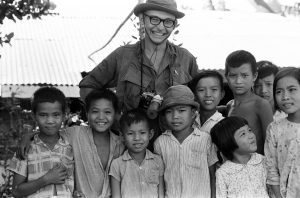
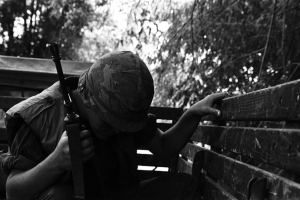







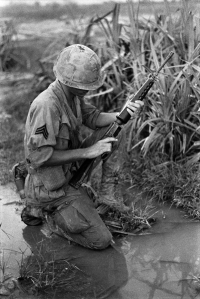



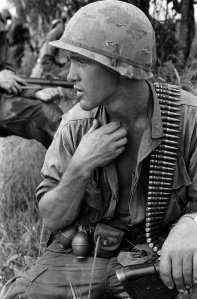

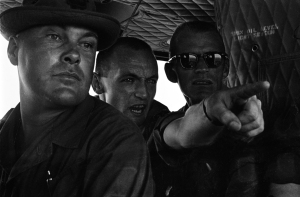
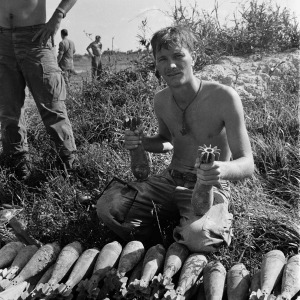

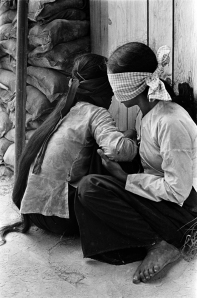
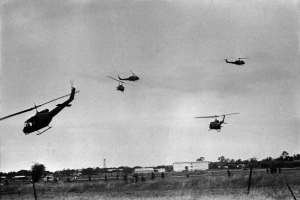
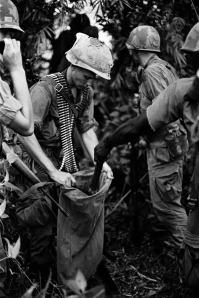


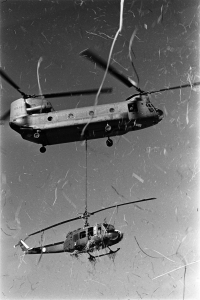




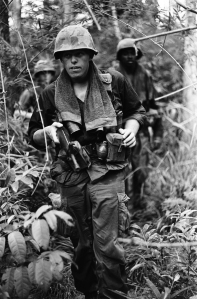



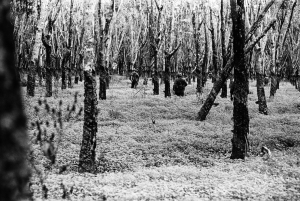




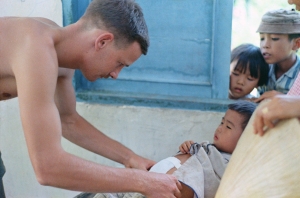





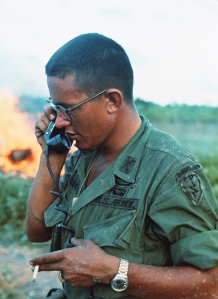

For a writer, it’s rare to have no words, but these pictures and the vulnerable young faces of the soldiers drove home, at least to me, a reality of war. They left boys and came home men. Some were damaged, yes, but they saw their duty and did it. The work they did with the children was touching and if anything, it showed the good hearts these men have. God bless each of them. Welcome Home!
LikeLike
OUTSTANDING
LikeLike
An evil nightmare best forgotten except to remember there are no wars for freedom only for banks and war profiteers and imperialistic unbridled capitalistic fascist corporate occupation.
LikeLike
An evil nightmare best forgotten except to remember there are no wars for freedom only for banks and war profiteers and imperialistic unbridled capitalistic fascist corporate occupation.
LikeLike
Haughey must have been with the 25th…Dau Tieng and Cu chi.
I still search faces, looking for familiar faces!
LikeLike
What an evil nightmare!
LikeLike
What an evil nightmare!
LikeLike
Good blog, I am a Vietnam veteran 66-67 3rd Marine Division.
LikeLike
Great pictures,,,I sure know the feeling of a head bowed before going out,,,I would love to know why the woman had her finger up in the face of that GI maybe she was pointing at a bug on his face,,,,,
LikeLike